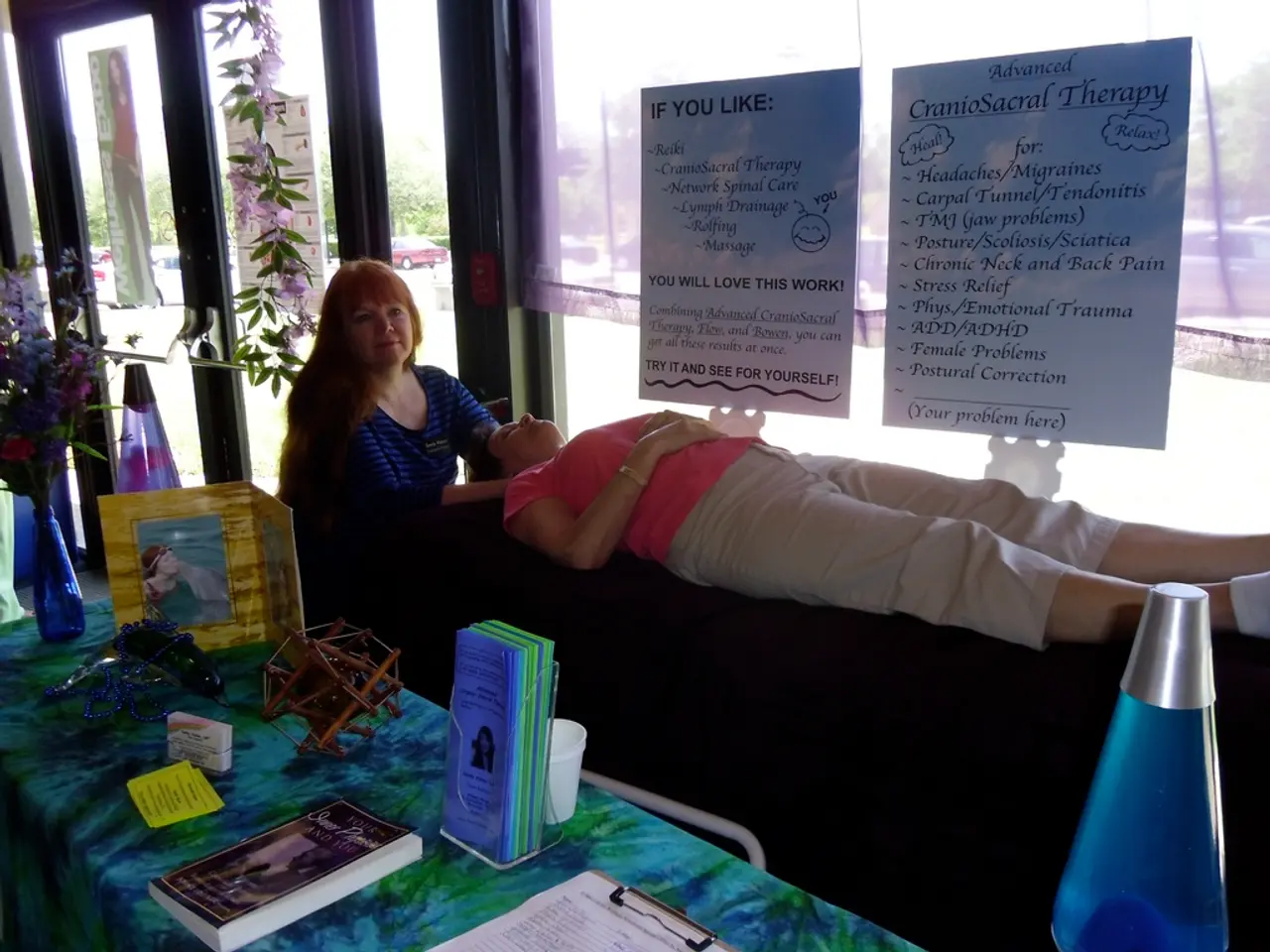Are bipolar disorder and manic depression the same condition?
The term "bipolar disorder," as it is known today, was officially renamed from "manic depression" in the DSM-III, published in 1980 [2]. This edition marked a significant shift in psychiatric understanding and diagnostic criteria [1].
Before the DSM-III, the condition was labelled as "manic-depressive illness." The change from "manic depression" to "bipolar disorder" was likely due to the negative stigma associated with the former term [3].
Bipolar disorder is characterized by the presence of manic, hypomanic, and depressive episodes. Bipolar I disorder is characterized by manic episodes, while bipolar II disorder involves hypomanic episodes interspersed with depressive episodes [1].
In addition to these, there are other types of bipolar disorder. Cyclothymic disorder, or cyclothymia, involves a person experiencing hypomania and mild depression for at least 2 years [4]. Other specified or unspecified bipolar disorder is when a person experiences periods of significant mood elevation but does not meet the criteria for one of the other types [4].
Manic episodes, as defined in the DSM-III, include feelings of elation, irritability, increased activity, decreased sleep, fast talking, excessive hunger, sex drive, or desire for pleasurable activities, feelings of importance or power, and racing thoughts [1]. Depressive episodes, on the other hand, are characterized by feelings of sadness, anxiety, restlessness, difficulty sleeping, slow talking, forgetfulness, difficulty concentrating, lack of interest in activities, feelings of hopelessness or worthlessness, and thoughts of suicide [1].
A person with bipolar disorder typically experiences periods of intense changes in emotions, sleep patterns, and activity, known as episodes [5]. These episodes can lead to serious issues that affect all areas of a person's life, including drug or alcohol use, legal or financial issues, and thoughts of suicide or suicide attempts [6].
Fortunately, treatment for bipolar disorder is available. This typically includes a combination of medications, specifically mood stabilizers, and psychotherapy [7]. Psychotherapy can help someone live with the difficulties of mood changes and often focuses on recognizing patterns in mood, energy, and sleep [8].
Keeping a mood journal can also help a person better understand their moods [8]. If you or someone you know is in crisis and considering suicide or self-harm, resources such as the 988 Lifeline, Crisis Text Line, Befrienders Worldwide, and local emergency services are available for free and confidential support 24/7 [9].
Research shows that bipolar disorder can reduce a person's life expectancy by anywhere between certain amounts [10]. It is crucial to seek help and treatment to manage the condition and improve quality of life.
References: 1. American Psychiatric Association. (2013). Diagnostic and statistical manual of mental disorders (5th ed.). Arlington, VA: American Psychiatric Publishing. 2. Goodwin FK, Jamison KR. Manic-depressive illness: Brief treatment. British Journal of Psychiatry, 1990;156:349-355. 3. Jones LW, Akiskal HS. The term manic-depressive illness: A historical overview. Journal of Affective Disorders, 1993;32:1-12. 4. American Psychiatric Association. (2022). What is cyclothymic disorder? Retrieved from https://www.psychiatry.org/patients-families/cyclothymic-disorder/what-is-cyclothymic-disorder 5. American Psychiatric Association. (2022). What is bipolar disorder? Retrieved from https://www.psychiatry.org/patients-families/bipolar-disorder/what-is-bipolar-disorder 6. National Institute of Mental Health. (2019). Bipolar disorder. Retrieved from https://www.nimh.nih.gov/health/topics/bipolar-disorder/index.shtml 7. National Institute of Mental Health. (2019). Bipolar disorder: Treatment. Retrieved from https://www.nimh.nih.gov/health/topics/bipolar-disorder/treatments.shtml 8. National Institute of Mental Health. (2019). Bipolar disorder: Self-help. Retrieved from https://www.nimh.nih.gov/health/topics/bipolar-disorder/self-help.shtml 9. Substance Abuse and Mental Health Services Administration. (2021). National Helpline Directory. Retrieved from https://www.samhsa.gov/find-help/national-helpline 10. American Foundation for Suicide Prevention. (2021). Life expectancy and bipolar disorder. Retrieved from https://afsp.org/about-suicide/risk-factors/bipolar-disorder/life-expectancy-and-bipolar-disorder/
- The change from "manic depression" to "bipolar disorder" in the DSM-III, published in 1980, signified a shift in psychiatric understanding and diagnostic criteria.
- Bipolar disorder is characterized by the presence of manic, hypomanic, and depressive episodes, with Bipolar I disorder marked by manic episodes and Bipolar II disorder by hypomanic episodes interspersed with depressive episodes.
- In addition to these, Cyclothymic disorder, or cyclothymia, involves a person experiencing hypomania and mild depression for at least 2 years.
- Other specified or unspecified bipolar disorder occurs when a person experiences periods of significant mood elevation but does not meet the criteria for one of the other types.
- A person with bipolar disorder typically experiences periods of intense changes in emotions, sleep patterns, and activity, known as episodes, which can lead to serious issues affecting multiple areas of life.
- Management of bipolar disorder includes treatment options like medications, specifically mood stabilizers, psychotherapy, and seeking support from resources such as the 988 Lifeline, Crisis Text Line, Befrienders Worldwide, and local emergency services.




